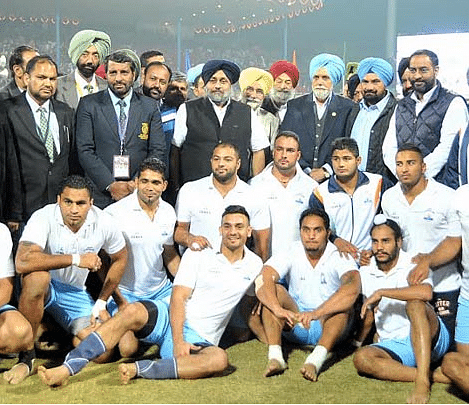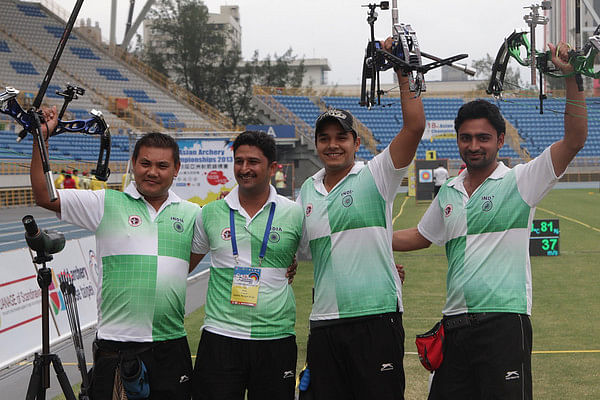Indian mythology and folklore the world over has given us our fair share of multi-headed monsters; creatures that often bring about chaos and destruction, only to be saved in the end by a great hero or heroine. In many a case, it involves chopping off each of the heads. But some of these mythic monsters were so well-equipped that at the fall of a head, another one would rear, just like new.
The Athletics Federation of India (AFI) have had quite a torrid time this year dealing with precisely such monsters, ones that have kept rearing their ugly heads over and over again. At a time of the year when the season is closed and there isn’t much to deal with for authorities, athletes and pretty much everyone else as they wind down for the season and prepare to usher in the new one, the AFI dished out some Christmas presents to a number of athletes and their respective state associations.
Boxing Day is earmarked as the occasion you get to uncover your presents, and boy, were the athletes in for a rude shock!
The AFI banned six states including Delhi and Haryana for fielding over-aged athletes. 14 other athletes also received suspensions, for duration of two whole years, after having been found guilty of doping.
These decisions were the two big talking points to emerge from the body’s two-day Executive Committee meeting on December 22nd and 23rd.
“In order to curb the overage and doping menace the Executive Committee of Athletics Federation of India, which met here on 22nd and 23rd, have decided to enforce stringent measures on both erring athletes and their respective state-units,” AFI said in a release.
The implication of this ruling is that the six states in question – Delhi, Haryana, Bihar, Rajasthan, Madhya Pradesh and Uttar Pradesh – will not be able to take part in any competitions organized under the banner of the AFI in the coming season.
However, the athletes from these states can participate in the events, but they would do so under the AFI banner as independent athletes; that too, post an approval from the President/Secretary of the AFI.
The report claims that 44 athletes were found to be over the age limit in various competitions through the year. For the erring athletes, the punishment is even harsher, an exile of two years.
You do wonder if the punishment is fair, because as much as it is an athlete’s responsibility to ensure that he/she is not engaging in any activity that contravenes the established norms of fair play, the fact that the state federations were accomplices in it cannot be discounted.
You could argue that giving the state bodies a two-year ban will affect the careers of other athletes from the states involved as they would see their development stalled by a lack of funds and exposure resulting from the ban. But, isn’t that a strong message worth sending to ensure that they do not err again?
The other magic number is 14 – which is the number of athletes banned for doping. The lot that tested positive have also been given a two-year suspension from the sport. There is nothing to complain about here at all.
The damning verdict at the close of the year was bad enough, but what makes it even more worrying is the emergence of a trend in Indian athletics this year, one of repeated faux pas and goof-ups and doping instances.
It has been a tumultuous year so far filled with many embarrassing instances for the national athletics body as well as many fires that it had to go about extinguishing.
The National Anti-Doping Agency (NADA), in its dope tests through the year, found 23 track and field athletes to be guilty of doping; that number was among the highest from any discipline and earned athletics a place on the leader board in number of dope-tainted athletes.
There was also the huge fracas involving national record holding triple-jumper Renjith Maheshwary. The past caught up with Maheshwary as the jumper got caught up in a doping scandal from five years ago that snowballed into a huge controversy.
Maheshwary was accused of having failed a dope test at the 2008 Nationals in Kochi. The AFI for a long time refuted claims that he had been found guilty of doping, in order to save face, as they had recommended his name for the Arjuna Award for the third consecutive year, after doing so in 2011 and 2012 as well.
The Sports Ministry wanted a final clearance from the AFI before it went ahead and bestowed the award on Maheshwary. Finally the pressure came through, and the AFI admitted that Maheshwary had indeed committed a dope violation in Kochi, though they could not locate the files which would serve as evidence.
However, a letter from the AFI to the Railways, Maheshwary’s employers at the time, documenting his doping offence, proved to be the clincher in the end.
All this while, the Sports Ministry and Maheshwary himself, were in a state of suspended stasis as to the status of his Arjuna Award. Eventually, in a most embarrassing sequence of events, Maheshwary was intimated just hours before the awards function, that he was being hauled off the awardees’ list.

The issue of over-aged athletes too was not the first instance, and what’s more, it happened at an international event. At the Asian Youth Games in August in Nanjing, China, 17 young track and field athletes were sent back home from the games for being over the prescribed age limit.
For athletics, there was a different age criteria as compared to the other disciplines and this was overlooked, as the AFI sent athletes who were born before January 1, 1997, the date that was set for the athletics events.
This led to another administrative scuffle, this time between the AFI and the Sports Authority of India (SAI) which demanded compensation to the tune of Rs.10 lakh that it had spent to send the 17 athletes to China.
A moot point here is the oversight on the part of the organizers to provide some defence to the Indian authorities. As is the case with most international events, the name lists of the participants are sent across well in advance, and only after confirmation from the organizers are the participants sent. So how was it that the organizers failed to spot the discrepancy during verification? The Indian media likes a story and pounces on any given opportunity to beat up the sporting authorities, but there lies some share of the blame elsewhere too on this occasion.
Still, the fact that the AFI allowed such an oversight to happen under its watch is a major indictment of its operational efficiency.
Another instance where the ugly head of doping cropped up to cause more loss of face for the AFI was at the Asian Championships in Pune in July, when shot-putter Udaya Laxmi had to be forcibly withdrawn after she tested positive for a stimulant.
And if you thought that 2013 just happened to be an extremely unfortunate year for the AFI, if anything, it was a continuation of a deep-rooted malaise that has been in existence for a few years now.
The NADA furnished a report recently, in response to an RTI petition filed by a citizen, detailing instances of doping between January 2009 and July 2013. The figures were shocking.
In the above period, a total of 500 athletes were said to have tested positive for doping and 423 out of them had sanctions imposed on them by the Anti-Doping Disciplinary Panel (ADDP). Topping the list, in terms of number of offenders, was athletics.
Athletics had 113 doping violations in that period with weightlifting in tow in second place with 92 violations. The other disciplines to feature in the top were Kabaddi, Bodybuilding, Powerlifting, Wrestling, Boxing and Judo, in that order.
In some further indictment, the International Association of Athletics Federations (IAAF) revealed through one of its reports in August that India had the second-highest number of dope cheats placed in suspension in athletics, with 43, one behind Russia who had 44.
Certainly not the lists which the AFI would have wanted to be topping!
To cause further consternation to an already worried community, the NADA revealed that doping as an acceptable practice was starting young, with school-going athletes found to be rampantly using syringe-based performance enhancing drugs at an inter-school meet in Kerala.
During another event at the Kanteerava Stadium in Bangalore, TOI reported to have again found a number of used syringes in both the boys and girls toilets. In fact, two of them, after having been caught red-handed by the Doping Control Officer (DCO) at the stadium, proceeded to run away from him. They were subsequently disqualified.
A similar expose was carried out by TOI at the Jawaharlal Nehru stadium in Chennai in July-August.
Even internally, there wasn’t nothing for the AFI to write home about, as elections to its posts were held twice, after the first one was said to have violated the Sports Code put in place by the Sports Ministry. The President, treasurer and secretary elected through the first election were not recognized by the ministry and it threatened to de-recognize the AFI, similar to the IOC’s threat to India’s Olympic body.
After changes to the constitution, Adille Sumariwala, CK Valson and PK Srivastava were elected president, secretary and treasurer, respectively.
Going into 2014, a year in which the country will be participating in the Asian Games and the Commonwealth Games, the signs are bad with the national athletic body seemingly exhibiting an alarming level of operational inefficiency.
The recurring instances of doping violations and age and eligibility related faux pas have cast a dark shadow on the capability of the administrators to lead the nation’s athletic federation on the right track.
There are many issues to mend, notable amongst them being repairing the discord and acrimony that was create between the AFI and other agencies such as the Sports Ministry and the SAI. Maintaining good relationships with these bodies is a must, if at all the athletes’ interests are to be well taken care of.
It’s tough stand to stamp out doping and cheating by handing out lengthy bans and suspensions is also a welcome move, as much as the state associations may crib about it. After all, India needs athletes that are clean and meeting the required eligibility criteria to be representing it at the major events. Falling prey to last minute withdrawals due to one issue or another in front of the global sporting community is not something the country would want to see at this juncture.
The multi-headed monster is at the shores threatening to swallow up Indian athletics. The proverbial hero, a saviour is needed to rescue the situation and men and women donning the posts at the AFI have a major task at hand. Indian athletics not so much needs as demands a new dawn in 2014.




































.jpg)














